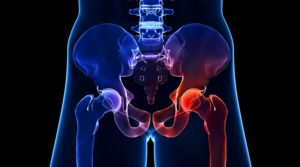About

Enabling a personalized approach
Medicine is personalized. The best of clinical medicine draws from all available resources to tailor a treatment for each patient. The gold standard of medical care is and should be an n of 1, epidemiologically speaking. This textbook explores what it means to deliver n of 1 care to patients with musculoskeletal conditions?
One characteristic of personalized medicine is that assessment reaches beyond population averages. Selection and dosing of prescription medications involves individual patient data such as genetics, environmental exposures, lifestyle and metabolomics. The timing of and the need for palliative surgery considers emerging therapies such as photobiomodulation, biotensegrity, teledontics and molecular regenerative approaches. Additionally, pain control for often chronic musculoskeletal conditions is opioid-sparing because treatment can be more precise by modifying the patient’s specific metabolic pathways.
Why proactive orthopedics works
Personalized medicine enables prevention. It allows patients to participate more fully in their care, effectively replacing reactive approaches to orthopedics.
Proactive orthopedics works with the body’s innate healing mechanisms. We know that ancient physicians of both East and West marveled at the powerful healing from within elicited by diet, lifestyle and simple metabolic approaches. Today we see emerging technologies buttressing Antiquity’s practice of observing, describing and quantifying the human body’s regenerative potential. 21st Century therapies accelerate the human body’s self-healing mechanisms.
The musculoskeletal system is especially responsive to the innate healing mechanisms. The explanation for the suppleness of muscle, bone and connective tissue is rooted in the fundamentals of metabolism. Look at it like this: Musculoskeletal structures are like nutrient warehouses. When pH drops, bone is metabolized for buffering. When fat metabolism is impaired muscle protein is catabolized for energy. Also, system-wide inflammation inhibits optimal repair of soft tissues. Further, the study of scaling and proportions called allometry demonstrates how sarcopenic obesity contributes to dehydration, detoxification and utilization of fat-soluble nutrients. Correcting metabolism in each of these examples confers a healing advantage to a beleaguered musculoskeletal system.
Credibility for the Information Age
Emerging therapies and the comprehensive evidence behind them are not enough to justify the compilation of chapter authors for this book. Our combined vision for how this book can serve health care professionals and their patients reach even further. It harmonizes the expert opinions of 35 thought leaders in diverse specialties across the practice of medicine. Their consensus of opinion provides readers with a resource greater than the sum of its chapters.
Both authoritative and patient-focused, Metabolic Therapies in Orthopedics, 2nd Edition gives health care practitioner’s a solid hook on which to confidently hang their stethoscope, figuratively speaking. It’s practical, written by clinicians for clinicians. These clinicians “walk the talk,” providing empowerment by teaching effective, safe and valuable practice guidelines. Their work serves the interest of important constituencies of the healthcare system, patients, families, providers, and the community. It’s a practical tool that allows you to translate its contents into a realistic medical practice.
 Designed to be used efficiently, the chapters are intended to save readers time by synthesizing a broad and fast-moving field of medicine. The authors’ collective knowledge is an unprecedented synthesis of orthopedic medicine, which draws from informatics, genomics, microbiology, ecology, biophysics, agriculture, pharmacology, and veterinary medicine
Designed to be used efficiently, the chapters are intended to save readers time by synthesizing a broad and fast-moving field of medicine. The authors’ collective knowledge is an unprecedented synthesis of orthopedic medicine, which draws from informatics, genomics, microbiology, ecology, biophysics, agriculture, pharmacology, and veterinary medicine
The Information Age can’t diminish the value of textbooks that are created with the forethought utilized for creating this reference book. If anything, the internet increases the book’s value, because of health care practitioners’ growing need for discernment. The internet promulgates valuable information, unsubstantiated and unripe therapies, sometimes marketed directly to our proactive patients. If we are savvy we concurrently reach for emerging evidence-based therapies and help patients navigate around modern iterations of P.T. Barnum-style hoaxes, and “fake news,” call them what you want. This book empowers health care providers to readily distinguish hope from hype, and engenders forward-thinking healers and adherers to “first-do-no-harm.”
Continuing the call from one decade to the next
Metabolic Therapies in Orthopedics, 2nd Edition stands on the sturdy shoulders of its first edition published in 2006 under the title Scientific Evidence for Musculoskeletal, Bariatric and Sports Nutrition. Still in print, the book was the first to be written by doctors for doctors as a synthesis of the scientific evidence for metabolic therapies for musculoskeletal conditions. This edition presents a team of experts that include new luminaries and returning authors presents the next decade of breakthroughs:
- New opioid-sparing pain management strategies
- How orthopedic surgeons use metabolic therapies to prevent delayed union of bone Metabolic therapies that restructure the pharmacocentric medical framework.
- Metabolic strategies for improving surgical outcomes
- Nutrigenetics alongside nutrigenomics
- Photobiomodulation
- Regenerative orthopedic therapies including those used in veterinary medicine with anticipated human uses in the near future
- Improving oxygenation
- Treating fascia, the body’s ancient and overlooked metabolic roads
Please join the conversation at www.BetterOrthopedics.com, the book’s dedicated website. And on behalf of the entire Metabolic Therapies in Orthopedics, 2nd Edition team, thank you for using this book to put “personalized” back into clinical medicine.
